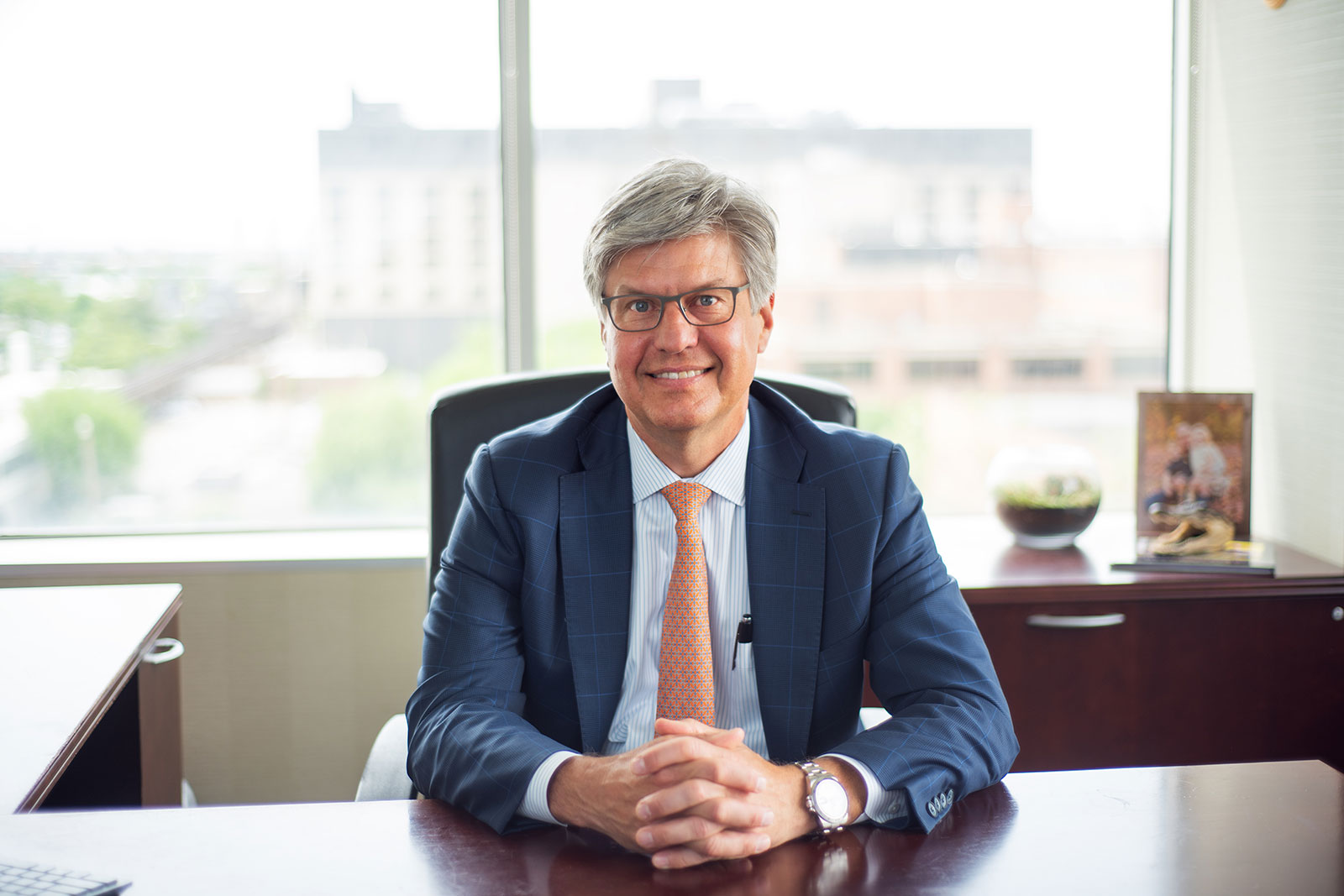Although smoking is still the leading cause of lung cancer in the United States, spreading awareness about preventative care is one of the most effective ways to combat it. Dr. Michael Liptay, professor of surgery and chairman of the Department of Cardiovascular and Thoracic Surgery at Rush University Medical College, has devoted his career to providing top-notch care to lung cancer patients and encouraging them to advocate for themselves. To Liptay, taking good care of yourself ahead of time can prevent health complications down the line.
“The principles of people that get sick and how we tend to them are pretty much universal, but the tools and the diagnostic techniques and therapeutic things we have at our disposal now are better and different than when I started, and they’re going to be better and different five to 10 years from now,” Liptay says.
According to the American Lung Association (ALA), more than 541,000 Americans have been diagnosed with lung cancer. The disease is the most common cancer worldwide, accounting for approximately 2.1 million new cases annually. Early detection is a critical component of a lung cancer diagnosis and treatment process, and it can significantly impact patient prognosis.
“Don’t hesitate to push with your primary care doctor or even call up centers like ours and see, if you’re eligible, if you can obtain a lung cancer screening CT scan,” he advises. “That’s really going to be your best chance at, if you’re going to have a lung tumor, being able to have it detected early and cured.”
To further combat the prevalence of lung cancer cases, the U.S. Preventive Services Task Force (USPSTF) now recommends a yearly low-dose CT scan for people aged 50 to 80. The task force also recommends reducing the number of pack-years from 30 to 20. The change reflects a new attempt by medical professionals to increase the number of eligible people for screening. By following these recommendations, health care professionals believe that we can reduce the risk of death from the disease by 20 to 25 percent. Under these guidelines, 14.5 million Americans will now become eligible for annual screenings, an increase of 6.4 million.
Although members of the medical community have pushed for early detection as a well-known and highly effective way to diagnose lung cancer cases much sooner, the process has its flaws. Liptay notes that it can still be challenging to get patients to follow through with preventative measures. A lack of communication, education and access to screenings contribute to the struggle some individuals and health care professionals face.
COVID-19 has also complicated matters over the last year. Many Americans remained at home, particularly early on during the pandemic. The result was a series of rescheduled and, sometimes, forgotten doctor’s appointments. These delayed preventive visits, Liptay argues, may be cause for concern.
“The challenge we still have is getting that word out to primary care doctors and patients directly because I hate to admit this but still, nationwide, only less than 10 percent of eligible patients are screened annually,” he says. “We’re already predicting that we might be finding some people with later-stage diseases as a whole because of the missed opportunities over the past year or so with COVID.”
A lack of communication, education and access to screenings contribute to the struggle some individuals and health care professionals face.
With 90 percent of eligible lung cancer screening patients still not undergoing their preventive screenings, finding a way to reduce this number is vital. Liptay and his team have adopted a two-step approach to finding a solution.
“The first is to help our primary care physicians and any other primary, any other health care professional that has patients at risk in their practice, to educate them on the criteria,” he says. Liptay hopes to ensure open lines of communication and increased access to education by building and maintaining great relationships with primary care physicians and patients and their families. The goal is to make it easier for physicians to have more conversations about smoking cessation and formal lung cancer screenings. The second step for Liptay and his team is continuing to reach out to patients with a family history of lung cancer or those who have smoked for at least 15 years.
“There are patients that could be at a reasonable risk still that are outside of that criteria,” Liptay admits. “Say they had a family history of lung cancer or they only smoked for 15 years and quit. That’s still a significant exposure, and we feel that those people should have access to, you know, potentially life-saving screening studies themselves. So, Rush is in the process of coordinating things with our system to provide affordable lung cancer screenings and follow-ups for those patients.”
Liptay leads a team of world-class physicians devoted to offering the best in patient care. From conducting cutting-edge research to employing a multimodal treatment approach, Liptay encourages everyone to know that a lung cancer diagnosis today, especially when detected early, doesn’t always mean what it did 30 years ago.
Liptay also wants patients to know that there’s always an opportunity to make healthy lifestyle changes despite having a smoking history. “There’s often a nihilistic or fatalistic attitude that patients can have.Well, you know what, if I get it, I get it. They can’t do anything about it anyway,’” he shares. “I would advocate that if patients are still smoking, it’s never too late to get your health back. Your lungs will thank you.”
Liptay remains dedicated to reducing the number of lung cancer cases annually by spreading awareness and continuing to offer his patients invaluable care. The same passion for innovation and patient care that drove him to pursue a career in medicine fuels him even more today.
“Fast forward to today, we’re lung cancer screening, there’s a lot of enthusiasm of early detection and the nihilism of patients with lung cancer all dying, in short order, has been replaced with a new optimism of early detection and other options even for patients that present later, such as immunotherapy and specific targeted therapy to one patient’s specific tumor gene expression,” Liptay says. “All of those things are things that, today, make my field so exciting and also make my choice to go into thoracic surgery, I feel like, such a rewarding one.”







